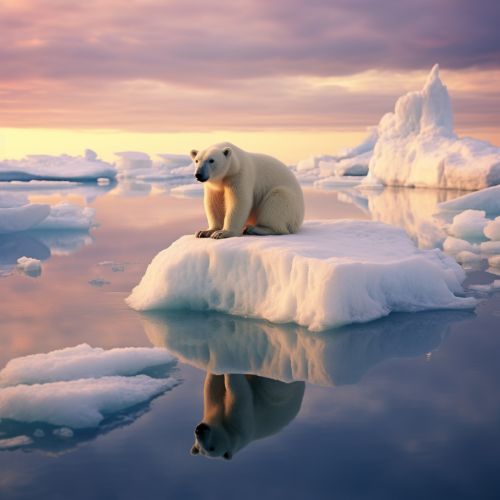Impact of Climate Change on Land Animals
Introduction
Climate change, a long-term shift in weather conditions identified by changes in temperature, precipitation, winds, and other indicators, has a significant impact on land animals. It affects the biodiversity of our planet, altering habitats and influencing animal behavior. This article will explore the various ways in which climate change affects terrestrial fauna, focusing on the physiological, ecological, and behavioral changes that occur as a result of this global phenomenon.
Physiological Impacts
Climate change can directly affect the physiology of terrestrial animals. This includes changes in body size, metabolic rates, and reproductive systems.
Body Size
One of the physiological changes observed in land animals due to climate change is a shift in body size. The Bergmann's rule suggests that animals in colder climates tend to be larger than their counterparts in warmer climates. As global temperatures rise, some species may shrink in size to adapt to the warmer climate. For instance, studies have shown that polar bears are getting smaller due to the melting ice caps and the consequent reduction in their food supply.
Metabolic Rates
Another physiological impact of climate change on land animals is the alteration of metabolic rates. Warmer temperatures can increase metabolic rates, leading to higher energy demands. This can result in changes in feeding behavior and food requirements, potentially affecting the survival of certain species.
Reproductive Systems
Climate change can also affect the reproductive systems of land animals. Changes in temperature and precipitation can disrupt breeding seasons and reproductive cycles. For example, some bird species are laying their eggs earlier due to warmer spring temperatures.


Ecological Impacts
Climate change also has significant ecological impacts on land animals. These impacts include changes in habitats, shifts in species distributions, and alterations in community structure.
Habitat Changes
Rising temperatures, changes in precipitation patterns, and increased frequency of extreme weather events can lead to significant changes in habitats. For example, the melting of polar ice caps due to global warming is causing a loss of sea ice habitats for species such as polar bears and seals.
Species Distribution Shifts
Climate change can cause shifts in the distribution of species. As temperatures rise, many species are moving towards the poles or to higher altitudes to find suitable habitats. This can lead to changes in the composition of species in certain areas and can disrupt existing ecological communities.
Community Structure Alterations
Changes in temperature and precipitation can also alter the structure of animal communities. Some species may become more dominant, while others may decline or even become extinct. This can have cascading effects on the food chain and can disrupt the balance of ecosystems.
Behavioral Impacts
In addition to physiological and ecological impacts, climate change can also affect the behavior of land animals. This includes changes in migration patterns, feeding behavior, and social structure.
Migration Patterns
Many animal species migrate based on seasonal changes. However, climate change can disrupt these patterns. For example, some bird species are migrating earlier due to warmer spring temperatures, which can lead to mismatches with the availability of their food sources.
Feeding Behavior
Changes in climate can also affect the feeding behavior of land animals. For instance, changes in precipitation can affect the availability of food sources for herbivores, which can in turn affect the feeding behavior of carnivores.
Social Structure
Climate change can also impact the social structure of certain animal species. For example, changes in resource availability due to climate change can lead to changes in group size and social dynamics among certain species.
Conclusion
In conclusion, climate change has a profound impact on land animals, affecting their physiology, ecology, and behavior. As global temperatures continue to rise, these impacts are likely to become more pronounced. It is therefore crucial to mitigate the effects of climate change in order to preserve the biodiversity of our planet.
